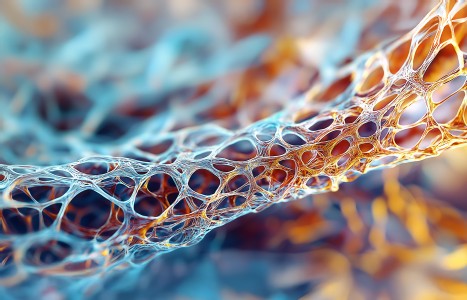Think of your most difficult patient – the one you try to motivate and work so hard with to develop a realistic treatment plan with achievable and measurable goals. Week after week, you see this patient struggle, sinking deeper into hopelessness as their health and quality of life continue to worsen. What if there was something else you could do that could change their outlook and their life? The solution is as simple as an automated program.
| Digital ExclusivePeripheral Neuropathy: An Integrative Approach
Peripheral neuropathy is a neurological disorder that affects the sensory, motor and/or autonomic nerves, and is caused by the abnormal functioning of these nerves due to various etiologies. These etiologies include diabetes, alcoholism, HIV, toxins, metabolic abnormalities, vitamin deficiencies, and adverse side-effects of specific drugs.
Peripheral neuropathy can be viewed in traditional Chinese medicine as qi and blood stagnation, damp accumulation, or kidney yin/yang deficiency. Both excess and deficiency may exist for this pattern, and can be further distinguished by the meridians involved. Since the etiologies are an important precursor to the evolved syndrome of neuropathy, treatment of the root condition or etiology may also be an integral approach.
Neuropathy mostly affects middle-aged and elderly individuals to varying degrees. A thorough investigation of an individual's pattern may help determine the treatment principle and assessment to therapeutic outcome through determination of the following: 1) location of the affected areas; 2) degree of neuropathic symptoms; 3) frequency of pain and discomfort; and 4) root cause of the condition.
Peripheral neuropathy typically affects the extremities, including the arms, legs, hands and feet. The neuropathy may affect the body at a local site, or the occurrence may be symmetrical. These conditions would be considered mononeuropathy and polyneuropathy, respectively.
The areas of neuropathy associated with nerve distribution can be further examined for nerve damage. Nerve conduction velocity studies and electromyography can help determine the extent of nerve damage involved. In one patient, treatment for long-term (10+ years) incidence of neuropathy showed improved results compared to a nerve conduction test performed at three years' difference after treatment with acupuncture and myofascial techniques. In this case, the patient's condition improved temporarily after sessions but returned to previous levels after a few days. Further information from nerve conduction studies on damaged nerves may also parallel the meridian obstruction or the root meridian involved. For instance, liver toxicity may show affected pain patterns along yin organs and liver point tenderness.
The symptoms often associated with peripheral neuropathy include weakness, cramping, decreased tendon reflexes, numbness, pain, and a burning sensation. Symptoms may appear alone or in combination. Individual patterns often will appear as varying degrees of symptoms, which can be used to assess therapeutic outcome while under a course of acupuncture and Chinese medicine. This is also a factor to be considered, since the degree of the symptom will often be the deciding factor to maintaining independence within the geriatric population. Independence can include forms of walking, taking care of oneself, and levels of mobility such as exercise. When there is decreased independence, geriatric patients may be susceptible to loneliness and depression. When these symptoms are decreased, much can be gained for the individual, including an improved comfort level.
The frequency of the neuropathic condition can change according to the time of day and one's activity level. The individual may experience symptoms throughout the day, but have increased sensations in the evenings. Significant aggravation will occur when applying pressure (such as from walking) to the areas affected. The symptoms may also appear with stress to the root condition involved. For instance, a patient who was allergic to tomatoes recognized that when he had small amounts of them, his neuropathy worsened. He never realized that there could be an association until a connection between food and disease patterns was presented to him by his acupuncturist. In effect, it may be apparent that while treating a patient, a decrease in the frequency of the condition may present as a guide toward having a positive therapeutic outcome.
Etiologies of diseases previously mentioned involve chronic diseases and symptoms such as peripheral neuropathy. Chronic conditions are perplexing and involve diligent and consistent therapy to help the patient through the difficulties associated. Treating the root cause of the condition should be considered when treating neuropathy with traditional Chinese medicine. While treatment for neuropathy in Western medicine is based on the symptoms and use of drugs such as Neurontin, there is much more to understand about its treatment through traditional Chinese medicine. The current Western medical treatment for neuropathy may include physical therapy exercises and drugs, but relief of symptoms is still slow. There is much to learn about peripheral neuropathy and how traditional Chinese medicine can help improve symptoms and offer people a better quality of life. Although an individual may not recover immediately or completely, relief of symptoms can make a difference in one's comfort level. Treatment of neuropathy should be considered as a long-term therapy and not just a short course of 10 sessions, as is usually implied with acupuncture.
As peripheral neuropathy affects two million people in the U.S., there is a sincere necessity for useful therapeutic approaches in providing relief to those affected. Traditional Chinese medicine may be a positive source for those whose condition has gone unchanged with current therapy and are in need of alternatives. By finding a standard in the patient's therapeutic outcome, traditional Chinese medicine as a therapy can also be recognized for its benefits in this complex condition.
References
- Merck Manual , 17 th ed, pp. 1491-1496.
- www.athenadiagnostics.com
- Adult and Geriatric Institute of South Florida
- Riley D. Treating Pain with Traditional Chinese Medicine.


